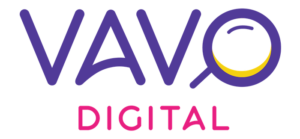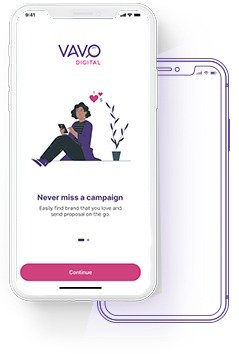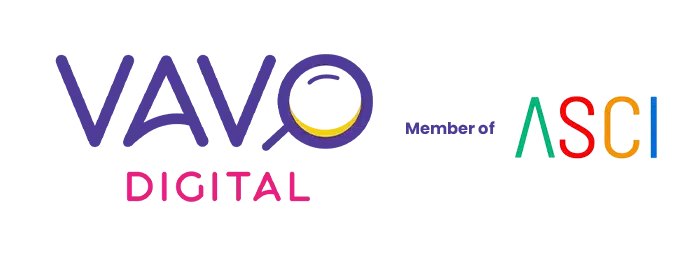
How Summer-Oriented Products Can Leverage Influencer Marketing to Maximize Sales and Achieve Their Best Quarter
Summer presents a golden opportunity for brands offering seasonal products—such as swimwear, sunscreen, beverages, and travel gear—to capitalize on increased consumer spending. Influencer marketing, with its authentic reach and engagement, has emerged as a powerful tool to amplify brand visibility and drive sales during this peak season.
The Power of Influencer Marketing in Summer
Influencer marketing has become one of the most effective strategies in the digital marketing playbook, and its impact is especially amplified during the summer months. As temperatures rise, so does consumer activity, both online and offline. People are more likely to travel, shop, attend events, and explore new experiences. This seasonal shift in behavior presents a golden opportunity for brands to harness the power of influencers and drive both awareness and sales.
1. Consumers Are More Active & Emotionally Driven in Summer
Summer is psychologically associated with freedom, enjoyment, and exploration. From vacations and beach trips to festivals and fitness goals, this season brings a noticeable spike in consumer engagement and spending. People seek out new products that align with their summer lifestyle, think sunscreen, swimwear, beverages, travel gear, skincare, cooling tech gadgets, and fashion accessories.
Influencers, especially those in lifestyle, travel, fitness, beauty, and parenting niches, naturally become the go-to source for summer inspiration. Their content showcases relatable use cases such as a favorite beach destination, poolside skincare routine, or summer recipe at exactly the right time when audiences are eager to discover and buy.
2. Influencer Marketing Delivers a High Return on Investment (ROI)
One of the most compelling reasons to invest in influencer marketing is its exceptional ROI. According to The Social Shepherd, brands generate an average of Rs 650 in revenue for every Rs 100 spent on influencer marketing campaigns. Top-performing brands, particularly those with optimized campaigns and strong influencer-brand alignment, can achieve returns as high as Rs 1700 or more per 100 rupees spent.
Compare that with traditional digital ads, where banner blindness and ad fatigue are common, and the value proposition of influencer marketing becomes even clearer. Influencers offer native, authentic product placements that feel more like trusted recommendations than sales pitches.
Moreover, influencer marketing doesn’t just impact direct sales—it drives long-term brand equity. Influencers introduce new customers to your brand, increase search volume, generate user-generated content (UGC), and fuel retargeting efforts for future quarters.
3. Trust: The Cornerstone of Influencer Effectiveness
Trust is the currency of modern marketing. Today’s consumers, especially Gen Z and millennials, are more skeptical of overt advertising. Instead, they turn to people they trust, friends, family, and increasingly, influencers.
According to the Digital Marketing Institute, a staggering 86% of consumers say they’ve made a purchase based on an influencer’s recommendation. This statistic is backed by platforms like Sprout Social and Shopify, which also cite influencer trust as a leading factor in driving purchase decisions.
What makes influencers effective is their ability to humanize brands. When an influencer demonstrates how they personally use a product during their summer travels or poolside relaxation, it creates a connection that is far more persuasive than a static ad.
4. Platform Preference: Where Summer Engagement Peaks
When it comes to platforms, Instagram remains the dominant force, particularly for summer-oriented content. Its visual-first nature is ideal for showcasing products like swimwear, skincare routines, travel destinations, and summer fashion. Features like Reels, Stories, and carousel posts allow for rich storytelling, behind-the-scenes glimpses, and swipe-up promotions.
YouTube also remains powerful, especially for long-form content like summer vlogs, tutorials (e.g., “Top 10 Sunscreens for 2025”), and travel diaries. Audiences spend more time on YouTube during summer vacations and often rely on it for product research and comparisons.
5. Seasonal Algorithms Work in Your Favor
Social media platforms adjust their content delivery based on seasonal behavior. During summer, when more users are engaging with travel, wellness, and outdoor lifestyle content, the algorithms are more likely to prioritize posts with seasonal relevance.
This means summer-specific influencer content can achieve better organic reach, especially when it uses relevant hashtags, trending audio, and user engagement triggers like polls or challenges. Brands that align their influencer campaigns with these algorithmic trends are more likely to gain visibility without increasing their ad spend.
6. Influencer Marketing Fuels Multi-Channel Growth
The ripple effect of a well-executed summer influencer campaign goes beyond just one platform. Here’s how:
- Google Search Lift: After influencer promotions, brands often notice a spike in branded search terms as people look up the product online.
- E-Commerce Impact: Influencer-generated traffic converts well, especially when paired with limited-time summer discounts.
- Email & SMS Amplification: Influencer content can be repurposed in newsletters, landing pages, and mobile campaigns to drive conversions.
- Paid Ad Optimization: UGC from influencers can enhance the performance of your summer paid ads by improving trust and relatability.
7. Seasonal Content Drives Higher Engagement
Engagement is the holy grail of influencer marketing. And summer offers content creators a wide canvas for outdoor shoots, travel vlogs, poolside routines, tropical recipes, and more.
Campaigns that capitalize on:
- Summer challenges
- Packing essentials for vacation
- Cool-down hacks for heatwaves
- Pool/beach product try-ons
…tend to outperform generic brand posts in likes, shares, comments, and saves. These higher engagement rates also improve platform ranking, increasing chances of going viral.
Identifying the Right Influencers
Selecting the appropriate influencers is crucial for campaign success.
- Micro-Influencers: Influencers with 1,000 to 50,000 followers often have higher engagement rates and more loyal audiences.
- Authenticity Over Reach: Prioritize influencers whose content and values align with your brand, ensuring genuine endorsements that resonate with their audience
- Engagement Metrics: Focus on influencers with high engagement rates rather than just follower counts to ensure active and interested audiences.
Strategies for Maximizing Summer Sales Through Influencer Marketing
To make the most of the summer shopping season, brands must leverage the power of influencer marketing with smart, intentional tactics. Here are three core strategies—along with actionable tips—to elevate your summer campaigns and drive sales:
1. Collaborative Content Creation
What It Means: Move beyond giving influencers a rigid brief. Instead, co-create content that feels natural to their audience while staying true to your brand voice.
Why It Works: Audiences respond better to content that feels real, not forced. When influencers feel involved in the creative process, the final product is more authentic, relatable, and engaging.
How to Implement:
- Host brainstorming sessions or give creators a mood board and ask for their input.
- Encourage influencers to tell a personal story that connects to your product (e.g., a summer memory, vacation, or lifestyle tip).
- Offer flexible guidelines so the influencer can adapt the message to their style (humorous, aesthetic, informational, etc.).
Example: A swimwear brand might collaborate with a travel vlogger to showcase a “Top 5 Summer Beach Destinations” video, featuring their swimsuits naturally in the narrative rather than as a formal ad.
2. Multi-Platform Approach
What It Means: Don’t rely on just one social channel. Instead, distribute your influencer content across multiple platforms like Instagram, TikTok, and YouTube to broaden your reach and reinforce your message.
Why It Works: Different platforms serve different audience behaviors. TikTok excels at virality and trends, Instagram is strong for visuals and brand aesthetics, while YouTube allows for deeper storytelling and product reviews.
How to Implement:
- Tailor content to each platform: Short, catchy Reels for Instagram, behind-the-scenes or haul videos on TikTok, and long-form reviews or travel vlogs on YouTube.
- Repurpose top-performing content across channels with platform-specific tweaks.
- Partner with influencers who have a presence on multiple platforms or coordinate campaigns with several creators specializing in different media.
Example: A sunscreen brand could launch a cross-platform campaign where creators post daily skincare routines on TikTok, lifestyle shots on Instagram, and detailed product reviews or travel diaries on YouTube.
3. Performance Tracking and Optimization
What It Means: Measure the success of your influencer campaigns using clear metrics, and refine your strategy based on performance data.
Why It Works: You can’t improve what you don’t measure. Tracking helps you identify which influencers, platforms, and content types are driving results—so you can double down on what works.
Key Metrics to Monitor:
- Engagement Rate: Likes, comments, shares – measures audience interest.
- Click-Through Rate (CTR): Percentage of users who clicked a link – shows how compelling your call-to-action is.
- Conversion Rate: Number of users who completed a purchase – the ultimate sign of success.
- Reach & Impressions: Useful for brand awareness campaigns.
How to Implement:
- Use UTM links or affiliate codes to track sales from specific influencers.
- Leverage influencer marketing platforms or analytics tools to consolidate data.
- Run A/B tests on content styles, calls to action, or posting times.
Example: If a YouTube influencer’s long-form content converts better than short Instagram Reels, you can increase your budget allocation toward video campaigns in future months.
Conclusion
As consumer attention shifts with the seasons, so must your marketing strategy. Summer is not just about sunshine and getaways—it’s a critical window of heightened consumer engagement and spending. Brands that tap into the emotional and aspirational elements of summer through authentic influencer collaborations are well-positioned to:
- Boost brand awareness
- Drive seasonal sales
- Gain loyal customers who return year after year
Whether you’re selling SPF 50 sunscreen, beach coolers, or iced coffee, your product can become the “it” item of the summer—if the right influencer tells the story.




